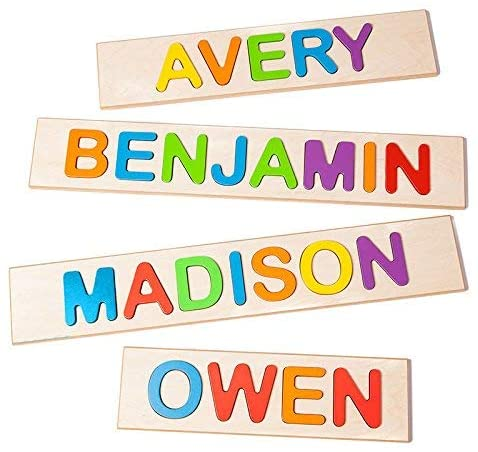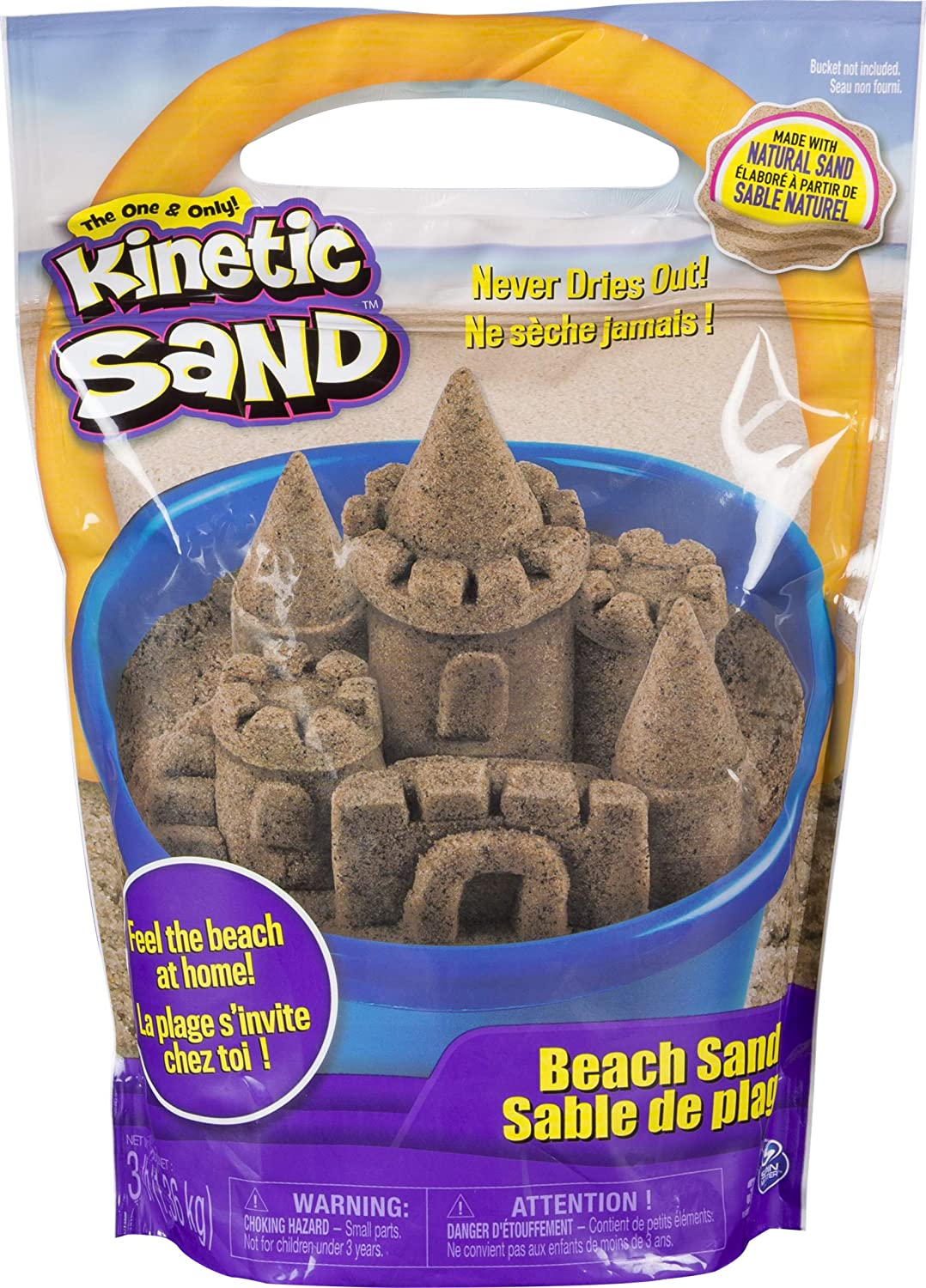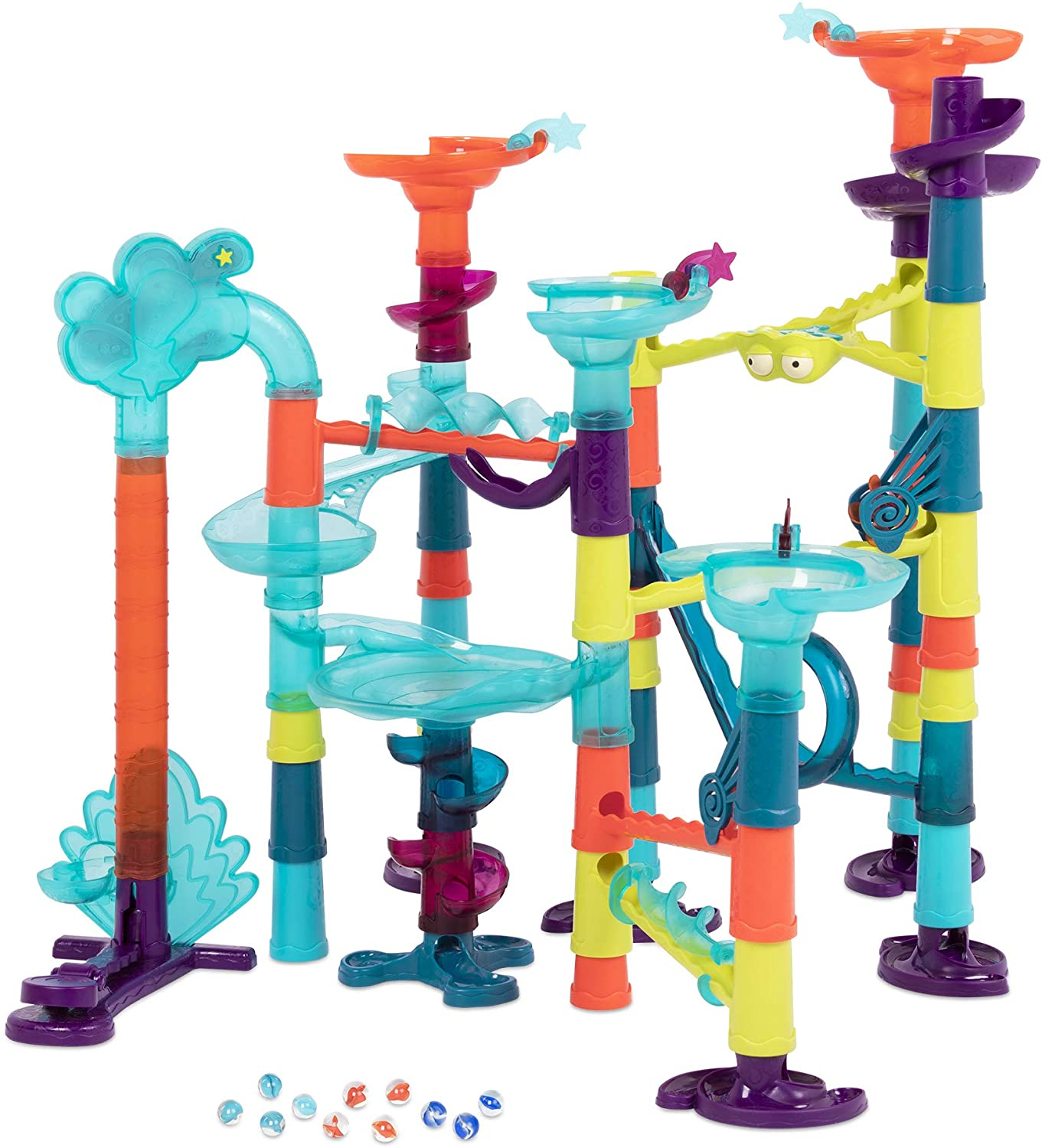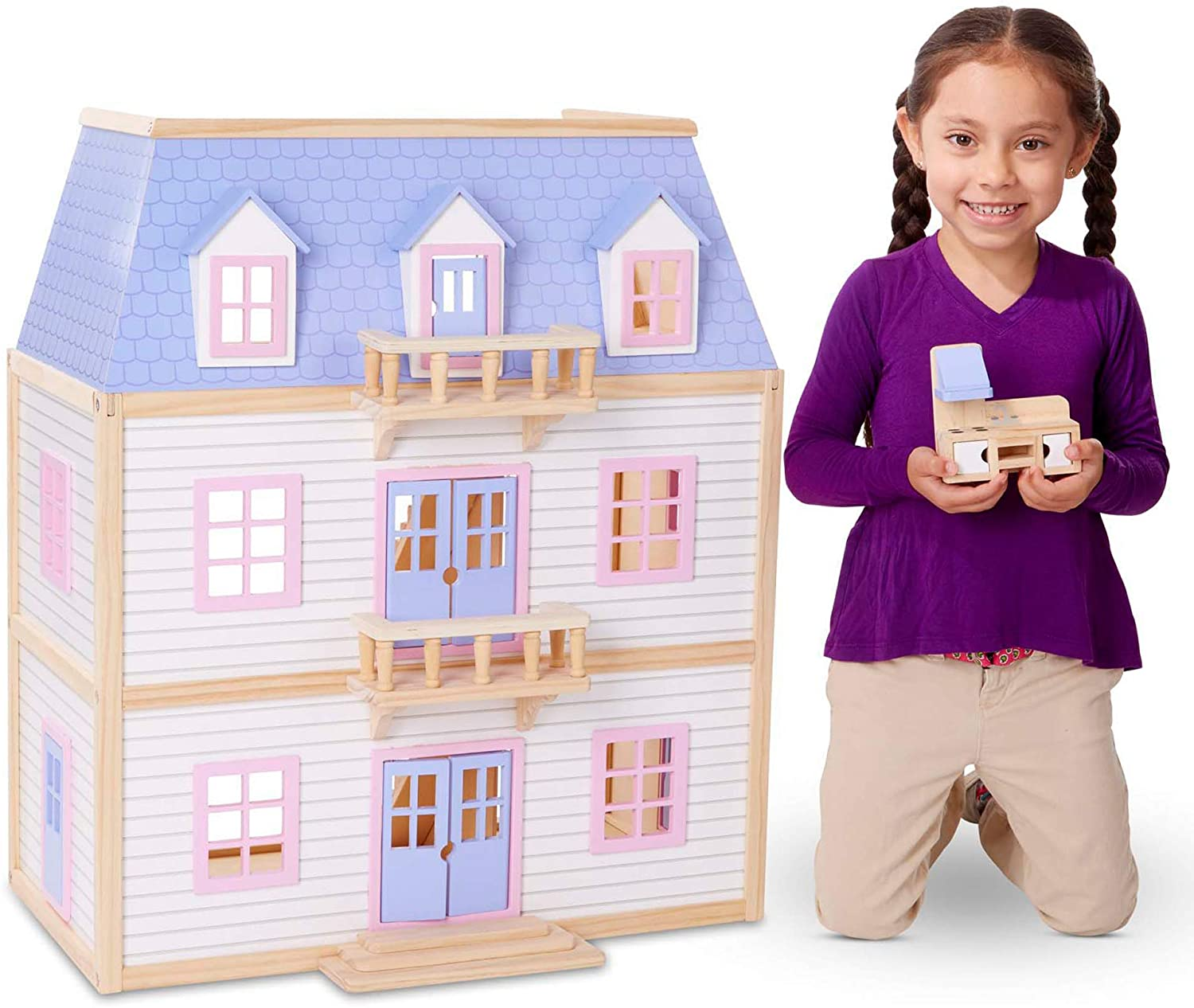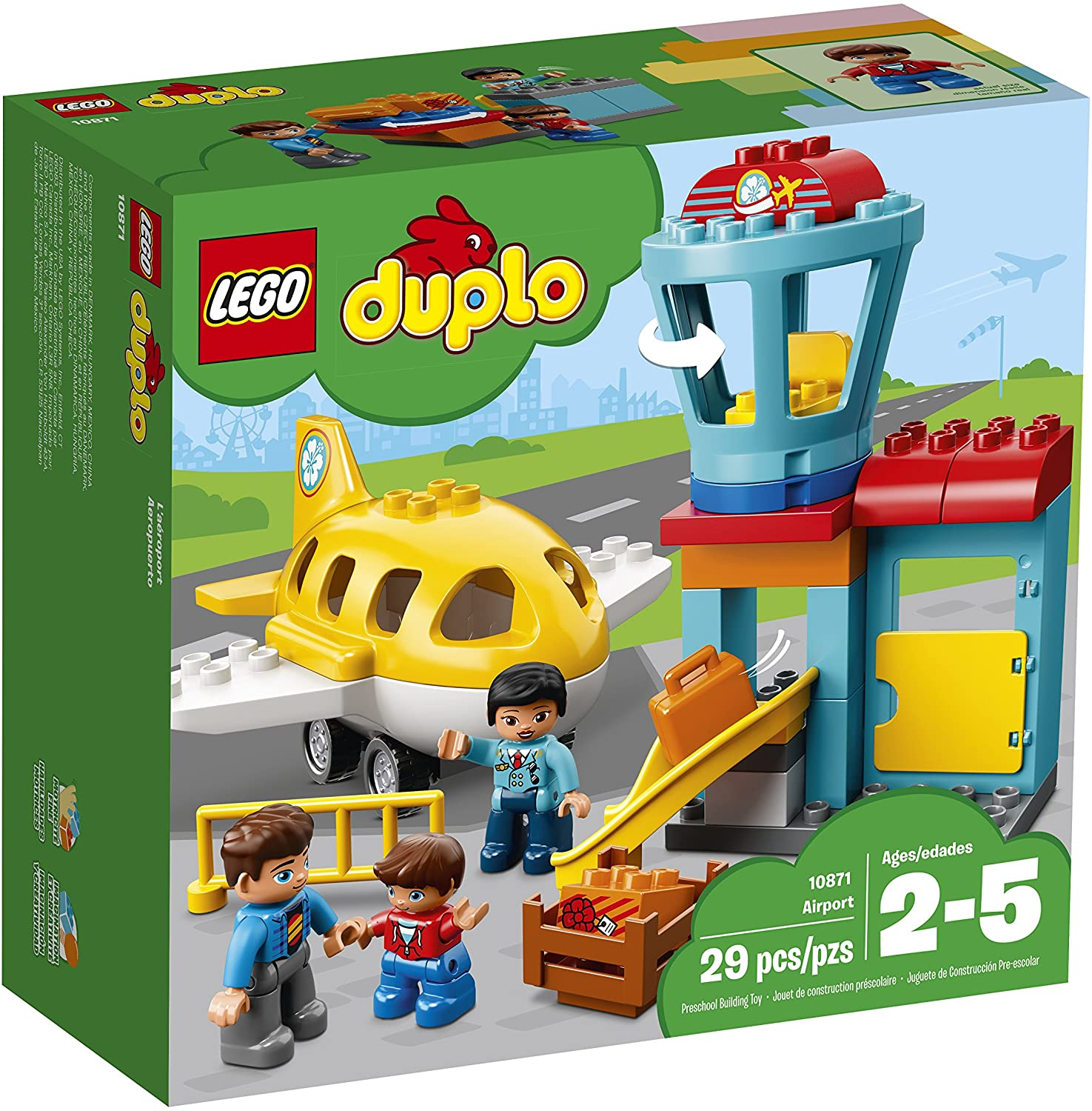Preschool Toy Gift Guide 2020
We are finally here for our fourth and final edition of our 2020 toy gift guides. Over the course of a few blog posts I have been recommending my favorite toys for young children to promote good speech and language skills. I hope you have found them helpful in planning your holiday shopping!
If you missed my past toy gift guides you can find those here:
What does play look like at this age?
In our two-year-old gift guide, I introduced the concept of pretend play. Pretend play is when a child pretends that something (like a situation) or someone (like a baby doll) is real. When a child pretends to feed their baby doll, they are pretending that their baby is real and can actually eat food. When a child puts their baby doll in their bed to sleep, they are pretending their baby doll actually has the capability of sleeping. Some additional examples of pretend play include playing superheroes, playing mommy or daddy, playing dress-up, playing grocery store, playing tea parties, and playing with trucks in the sand - just to name a few.
We see pretend play first start to emerge at two years old, but children start to further engage in more complex pretend play during this preschool age, starting around three years old. You will begin to see your preschooler play with the same toys that they did at two years old (make sure to also check out our two-year-old gift guide) but use them in different ways or combine different toys together in play to create a more elaborate play scenario.
Here are some examples of how pretend play may look different for a two-year-old versus a preschooler.
At two years old, a child may play with farm animals and a pretend farm. At three or four years old you may see a child build a fence out of wooden blocks around the farm to keep out intruders. Also, the preschooler may have some dinosaurs make their way onto the farm to get the farm animals, and then the farmer has to save them.
At two years old, a child may play with their pretend kitchen, pretending to cook mommy some eggs. A preschooler may use a cash register with their pretend kitchen to play grocery store. They may even ask another child to be the customer. They will ring up the customer at the cash register, and then the customer will take the groceries home and put them away in the kitchen.
At two years old, a child will mainly engage in pretend play alone, with guidance from an adult, or play parallel beside another child. But in the later preschool stage (4-5) you start to see kids engaging in collaborative play by pretending together. This is when pretend play turns into dramatic play. A whole storyline is created among a group of children and acted out through play. One child may pretend to be the teacher while other children pretend to be the students. The older the children get, the more elaborate the story lines of this dramatic play will be.
Will pretend play help prepare my child for school and if so, how?
Collaborative play and pretend play help to strengthen your child’s oral language skills. Your child must first build their oral language skills before you can expect them to succeed in learning to read and write. Why? Oral language skills set the foundation for reading and writing. If a child is having difficulty understanding what someone else is saying verbally, they will have difficulty comprehending what they read in a story. If a child is having difficulty expressing themselves verbally, they certainly will have difficulty expressing themselves in written language.
Through pretend play, you will notice that children begin to form a narrative for their play. Their play will have a central theme and will tell a story. At three years old, children may still play alongside each other in what is called associative play, and their storylines may be missing some key details. But by five years old, children will create and act out these more elaborate story lines. Each child will have a role to play. They may have problems within their play situation such as the customer forgetting to bring her purse to the grocery store. These narratives that these children create and engage in set the foundation for the ability to understand stories, read stories, and write their own stories. Beyond academics, these play situations will provide valuable social skills practice and preparation for life situations to come.
Personalized Name Puzzle
This is a fun puzzle to help your child recognize the letters in their name.
Melissa and Doug Ice Cream Scoop Counter
This ice cream scoop counter helps kids create a fun play scenario of an ice cream shop. I love that the customer and ice cream shop worker have to engage throughout the ordering process. The customer orders, and the ice cream shop worker has to understand the order and fulfill the order.
Melissa and Doug Wooden Building Blocks
These are a set of classic building blocks. Give your preschooler some blocks and combine them with animal figurines to see what your preschooler can dream up!
Magna-Tiles
This is currently the hot building toy right now. Will your child build a castle? Will they use these as pretend food?
Animal Figurines
All the figurines….animals, dinosaurs, dolls. I love to see these combined with a building toy to see what different situations are created in children’s minds!
Candy Land
This is such a classic game. Board games help to teach turn-taking which is important for conversation skills.
Bristle Blocks
This is a toy that two-year-olds can also use to build with. A two-year-old may build a castle, a building, or a house. A preschooler may start to build airplanes and cars, and these creations might be combined with toy soldiers or barbies during play.
Kinetic Sand
I love a good sensory activity. I generally start a sensory box at 18 months-2 years. But generally at those ages children are moving sand around, pouring and dumping. In these preschool ages, a storyline emerges. Characters may get stuck underneath the sand. A dump truck and digger may move the sand around to build a parking lot. It’s so fun to see what their imaginations cook up during sensory play!
Melissa and Doug Mailbox Activity
Even if your child can’t write yet, this is still a fun pretend play activity. Your child can pretend to write a letter and put it in the mailbox. Or you can step it up a notch, and one child can pretend to be the mail carrier.
Chutes and Ladders
This is another classic board game that can be incorporated at this age to learn turn-taking.
Hi Ho Cherry-O
Not only does this game teach turn-taking skills important for conversation skills, this game also incorporates counting skills and number recognition.
Marble Run
These pieces can be configured in so many fun ways to create a fun path for the marble. Children will definitely need to use their critical thinking skills.
Black and Decker Construction Dress-Up
Your child may already have some tools, but at this age they may want to look the part too!
Melissa and Doug Take Along Tabletop Trainset
There are so many different train sets out there, but I love that this one folds out.
Fisher Price Little People Launch Raceway
There are so many different car race tracks out there! This is a new one that can even be used with younger ages too.
Melissa and Doug Dollhouse
I love to see children act out scenarios from their own home through their play with dollhouses.
Disney Princess Dress-up Trunk
I think my daughter spends more time during the day wearing a princess dress than she does wearing anything else. You can find whatever princess you’re looking for on Amazon so your child can look the part as they belt out that favorite Disney song!
Hape Tea Set
What I love about tea sets is that tea time usually involves more than one person, which is great for developing skills for conversation.
Learning Resources Cash Register
Cash registers can be combined with play kitchens to play grocery store!
Lincoln Logs
These Lincoln Logs are my three-year-old’s current obsession. I love to see what she creates with these.
Wooden Rainbow Stacker
It may just look like a rainbow, but each of these pieces can be used in different ways to create and build! Build a snake or use the pieces to make tunnels for your cars to drive under! Let your child use their imagination!
Duplo Blocks Building Creations
These duplo block kits help children to build a variety of scenes. There are so many fun different duplo kits out there. You can buy a Frozen castle or a train. There is even one kit where you can build a dollhouse out of legos.
Books
Be sure to continue to read books with your children! At this age, you may see children start to act out certain stories through their play. Find books with fun storylines and characters!
What I love about preschoolers is how creative they can be! Preschoolers are often able to create and act out play scenarios even with minimal or no toys. So don’t feel like you have to go overboard and provide all these toys for your children. Sometimes less is more!
**For children who may have speech and language delays, always reach out to your child’s speech-language pathologist for more specific recommendations on how to use toys to target your child’s language goals!
If you have questions or concerns about your child’s play development, please contact us!


